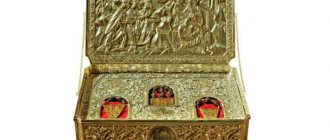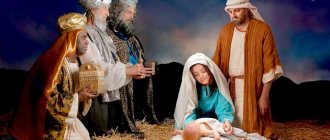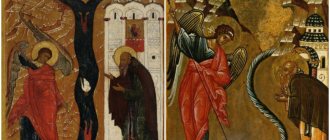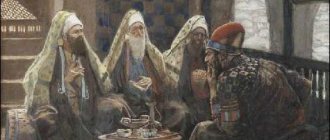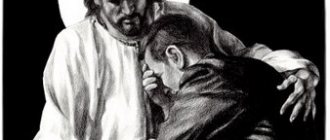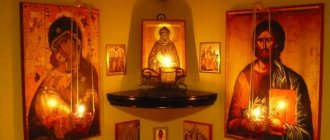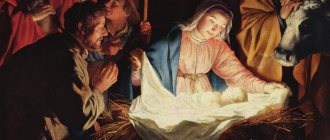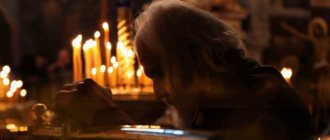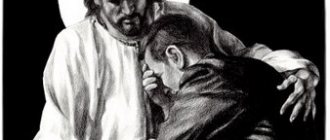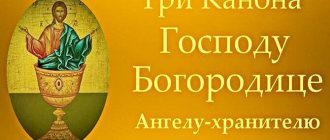“The Gifts of the Magi” or “the Adoration of the Magi” is a mention in the Gospel of Matthew, a famous story about magicians who came to worship the baby Jesus with special gifts. Christians and Catholics celebrate this event on January 6, as the day of Epiphany, although the date varies among texts.
Frankincense, gold, myrrh
Adoration of the Magi.
Gentile da Fabriano, 1423 Actually, Christians revere the Three Magi precisely because they were the first among people who did not belong to God’s chosen people of Israel to come to worship Christ and recognize Him as the Messiah. They brought very symbolic gifts to the Savior. Gold was presented to Him as the King of kings. On the one hand, it is a symbol of the tribute that subjects bring to their ruler. On the other hand, gold has always been used to make the most luxurious things, and often used to decorate sacred relics. The cherubim on the Ark of the Covenant in the Jerusalem Temple were golden, the faces of saints on icons are decorated with golden halos, temples are often crowned with golden domes... In addition, gold is also a symbol of wisdom (“golden words”, “silence is golden”) and eternity (due to that this metal does not deteriorate over time). All these properties and meanings give a very deep understanding of why gold was brought as a gift to Christ. After all, the King of kings is the wisest and most glorious, the One who has power and always uses it for good.
Frankincense, an expensive aromatic resin, was offered to Christ as God and High Priest. This incense is traditionally used for incense performed by a clergyman. This symbolically expresses a person’s reverence for God. In addition, incense reminds us that everywhere in the world, in everything, the Holy Spirit dwells, the third hypostasis of God the Trinity. As for the rank of the High Priest... The Old Testament king David called Christ Hierean after the rank of Melchizedek, the ancient king, who was also a priest. Little is known about this man. But in the Book of Genesis one very symbolic episode is associated with it. When Abraham came to Melchizedek, he greeted the guest in a special way - he brought him bread and wine, that is, a prototype of the Eucharistic sacrifice of the New Testament. Therefore, Christ, who established the Sacrament of the Eucharist, whose Body and Blood in the form of bread and wine is received by Christians during communion, is called the High Priest, with reference to Melchizedek.
The Magi gave myrrh, a funeral incense, to Christ as the One who must die for people. Perhaps they knew from prophecies what the fate of the Messiah would be, that He would endure persecution and suffering, go to the cross and give His life to save people from death. And His death will be followed by the Resurrection - that is why He came and why He was so expected.
Links[edit]
- ^ ab Schiller, Gertrude; Seligman, Janet (1971). Iconography of Christian Art, Vol.
I: The Incarnation of Christ, Childhood, Baptism, Temptation, Transfiguration, Works and Miracles, (English translation from German), pp. 100–114 and figs. 245–298. London: Lund Humphreys. OCLC 59999963 - Ainsworth, Marian Wynn et al., From Van Eyck to Bruegel: Early Netherlandish Paintings at the Metropolitan Museum of Art
, pp. 35-37, 2009, Metropolitan Museum of Art, 2009. ISBN 0-8709-9870-6, google books
Where to look for the Christmas Magi?
However, not only the gifts of the Magi were symbolic. Equally important is the fact that the wise men traveled a long way to worship Christ. The Magi were driven by the desire to find God - perhaps one of the most important motivations to worship Christ. The Magi were driven by the desire to find God - perhaps one of the most important motivations in human life. This search led them to the land of Judea. True, at first they went not to Bethlehem, but to Jerusalem, to King Herod, mistakenly believing that the King of kings should be looked for in the palace of the ruler. The tragic consequences of this mistake are known: the insane Herod learned from the wise men that a new King of the Jews had been born, found out from his sources that this happened in Bethlehem, and ordered the extermination of all children under two years old there. They are now revered as the first martyrs for Christ.
And the Magi went further after the Star, ended up in the town of Bethlehem and met their God there. Their further fate is not known for certain. Tradition says that they preached Christ and suffered martyrdom in Mesopotamia. The Christian community treated their burial with special respect. Why? The fact is that the three Christmas wise men are glorified as saints. True, among Western Christians their veneration is much more widespread than, for example, in Russia. But in the Berlin and German diocese of the Russian Orthodox Church they also love them and come to pray to them in the Cologne Cathedral - that is where their relics are now located. Previously, starting from the 5th century, the shrine was kept in Mediolan (modern Milan). From there they were transported to Cologne in the 12th century by Frederick Barbarossa. The city residents fell in love with this shrine very much and decided to build a completely unique “ark” for it. In the Middle Ages, there was a good tradition, in order to preserve a great relic, to specially build a cathedral, so beautiful that it had never been seen in the city. And for the sake of the “three kings,” as the Christmas Magi were called in Germany, they began to build the greatest Gothic masterpiece - Cologne Cathedral. In its very center - in the altar, in the reliquary made by the skilled craftsman Nikolai of Verdun - the relics of the three wise men remain to this day.
Gallery[edit]
- Mosaic, Santa Maria in Trastevere, Rome, Pietro Cavallini, 13th century
- Giotto di Bondone, 1320–1325
- Giotto, Scrovegni Chapel
- Medieval Book of Hours written for the family of Gray Ruthin, c. 1390
- Church of Saint-Thiebaut, Tang, around 1400
- Nikolaus Obilman (1435–1488), c. 1466
- Hans Memling, 1470
- Jean Fouquet; one of the magicians is King Charles VII of France
- Botticelli, 1475
- Domenico Ghirlandaio, 1485-88
- Giorgione, c. 1505
- Adoration, Jan Mostaert, 1520s
- Jacopo Bassano, 1563–1564
- Icon, Cretan school, early 17th century
- Diego Velazquez, 1619
- Rubens, Lyon, c. 1617–1618
- Abraham Bloemaert, 1624
- Pieter van Lint, 1630
- Rubens, Cambridge, 1634
- Rubens, 1624, in the Royal Museum of Fine Arts of Antwerp.
- Rembrandt, 1632
- Bartolome Esteban Murillo, 1655–1660
- Domingos Sequeira, 1828
- Tapestry, Edward Burne-Jones, Musée d'Orsay, 1887
- Fragment of a medieval fresco of the Kremikovsky Monastery
- Stained glass, St. Michael's Cathedral (Toronto)
B+C+M
Photo by Valery Bliznyuk
People's love for the “three kings” remains in Germany to this day and manifests itself in a completely special way. On January 6, in memory of their march following the Star, interesting processions can be seen on the streets of Cologne and many other cities.
Children, wrapped in shiny trains, with crowns on their heads and staves in their hands, walk from house to house and knock on doors. It is joyfully revealed to them: of course, the Christmas Magi, the wise men from the East, came, who followed the Star of Bethlehem and worshiped Christ! Just a couple of hours ago, the “wise men”, together with their parents, were waiting in the cathedral for the start of the service, after which the ark with the shrine was opened to them, and one after another they passed under the high altar on which the ark was installed.
Having “greeted” the Magi in this way, the children dressed in specially prepared costumes and scattered around the city to visit their neighbors. The Magi will sing Christmas songs and poems, and in return they will ask for something tasty or small money. The owner who gives the gift to the Magi will, in turn, also receive a gift - a blessing. The inscription “B+C+M” will appear on the doorframe of his door, indicating the current year, for example, 2014. This means that Balthazar, Caspar and Melchior visited the house and blessed it. And today, not only in Cologne, but also in Bavaria and other religious lands of Germany, it is difficult to find a door that is not decorated with the treasured letters.
The Gifts of the Magi themselves - gold, incense and myrrh - are kept on Athos, in the monastery of St. Paul of Xiropotamia. They are taken to different lands of Greece so that believers have the opportunity to touch the shrine. And at Christmas 2014, the Gifts of the Magi will be brought from the Holy Mountain to Moscow.
Fragment of the Slutsk belt in the priest’s ornate
The presence of a Slutsk belt in the old days indicated high status, because this accessory was very expensive and incomparably beautiful. Not many Slutsk belts have survived in Belarus; two of them are in the museum’s collections. They are not on display yet, although they may be soon.
Some time ago, museum staff and craftsmen joined forces and restored the technique for creating such belts. This is how the first copy of one of the belts stored in the museum was made. It was presented to the President of Belarus. And since then, such souvenirs have been popular gifts at the highest level.
And although it is not yet possible to see the entire belt in the museum, several of their fragments are presented in the exhibition. For example, an ornate decorated with part of a belt, that is, a priest’s robe. When the belt became worn out and old, it was often used as inserts in clothing. Especially after the advent of Soviet power, when wearing a belt, as a sign of the upper class, was prohibited. The ornament presented in the museum was sewn back in the 18th century; it was found in a church in the Voronovsky district. Silk, metal threads and velvet were used to sew this belt.
Botticelli's creation
Both in the West and in Russia, Christmas scenes attracted the attention of many artists. “The Adoration of the Magi” by Sandro Botticelli is one of the most European paintings on this topic. Moreover, the famous master was apparently so attracted to this plot that during his life he painted at least seven versions of the picture. But perhaps the most famous was painted approximately in 1475-1478, has survived to this day and is located in the Uffizi Gallery in Florence.
In the center of the crowded picture is the Virgin and Child. She sits among the ruins of ancient Rome, symbolizing the end of the old world and the beginning of a new, Christian one. Joseph stands behind, leaning on his arm, looking tenderly at the Savior. This is where the gospel heroes in the picture end; the remaining characters are residents of Florence and Botticelli’s contemporaries.
In the image of the Magi, he depicted three members of the Medici family: Cosimo the Old, kneeling before the Virgin Mary, and his sons - Piero di Cosimo (the kneeling Magus in a red robe in the center of the picture) and Giovanni di Cosimo next to him. All three were already dead by the time the painting was painted, and Florence was successfully ruled by Cosimo’s grandson, Lorenzo “The Magnificent” Medici, also depicted in the painting along with his brother Giuliano. During these years, a conspiracy was brewing in Florence against the Medici clan, patrons of the sciences and arts. The artist makes it clear that the city residents support the ruling family.
The painting was commissioned by the wealthy Florentine Gaspare di Zanobe del Lama, a member of the Guild of Arts and Crafts of the city of Florence and a Medici courtier, for the chapel in the Basilica of Santa Maria Novella. It is believed that Botticelli depicted the customer on the right in a light blue robe, pointing at himself and looking directly at the viewer. The self-portrait of Botticelli himself is made in the image of a blond youth in a yellow robe at the right edge of the picture.
The appeal to this particular subject in Sandro’s work is not accidental. The Medici family belonged to one of the most influential religious brotherhoods in Florence - the Brotherhood of the Three Magi, which organized a crowded costume procession that passed through the entire city, strongly reminiscent of a pagan carnival. And in the center of the picture is the Virgin and Child. And how important it is not to forget to whom and why the Magi come from the east.
Bort and stupa from the Chernobyl zone
A separate hall of the museum displays a collection of objects that were collected in the Chernobyl zone. This is an exhibition about a separate layer of culture and history of Belarus. Here you can see everything that in the last century you would have found in any home, and that after the tragedy became useless and even dangerous. Now all the collected items are not radioactive, they have undergone special processing.
In the collection you can find a bead in a single tree trunk. Previously, beekeepers cut hollows in trees and created suitable conditions for bees to settle there. The exhibition also includes a barrel made of a wooden trunk and a foot mortar and much, much more.
Centuries-old household items
The museum's collection contains many household items from past centuries. What was used by Belarusians in various crafts and simply for daily work. Many of them were frequent gifts from men to women and vice versa.
For example, if March 8th was celebrated in Belarus a century ago, men would have to make gifts to their beloved women with their own hands. And this would be either the top part of a spinning wheel decorated with carvings, or a homemade wooden comb, and maybe even a stick with patterns to make a strong sheaf of flax. Well, when spring comes, hardworking Belarusian girls would definitely stock up on decorated gingerbread cookies to make spring more fun. By the way, in the museum there are such salty gingerbreads from 50 years ago. It is not recommended to taste it, but you can admire it.
